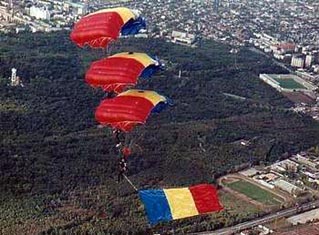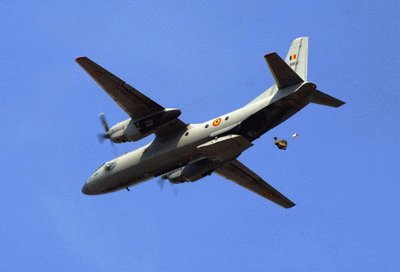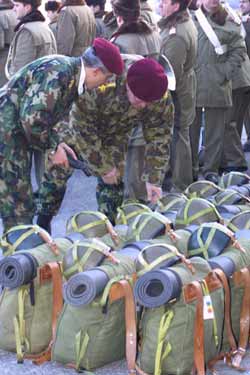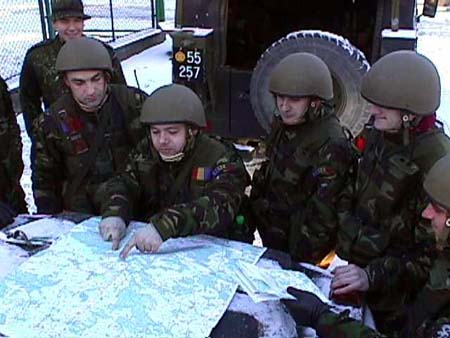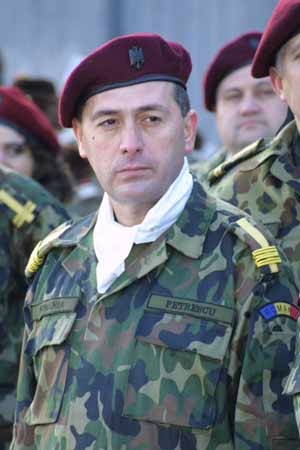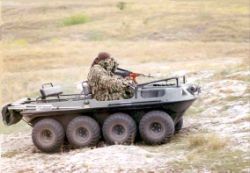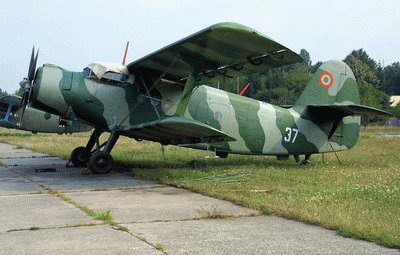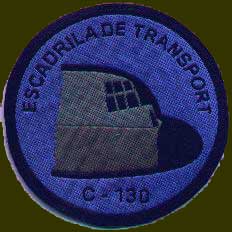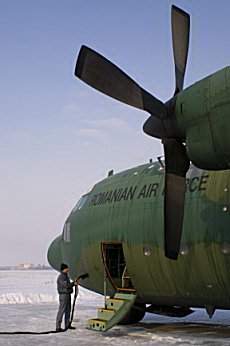|
The Parachutists
Being one of the first countries in the world to have a parachutists/airborne force in its military, Romania trained and developed its paratroopers since World War One.
Beside these achievements, Romania also holds many world records and many patens in this field, gained by pioneers such as Bastan G. and Smaranda Braescu.
Bastan G was one of the earliest users of this new thing called "a parachute", and Smaranda Braescu is not only the first woman to obtain a parachutist licence, but also a high performance jumper and holder of many, many, many world records and world first's.
During World War II, Romanian paratroopers held a large number of some very daring and successful operations against the Soviet invaders. Two forces represented a major threat to the Soviets, the Mountain Hunters and the Para's.
After World War II, Romania was ceded by the allied powers to the Soviet area of influence, in exchange for Greece, which was to be under Western influence. The Soviets have chopped off one third of the country, while also deporting hundreds of thousands of Romanians to concentration camps in Siberia, where they would find their end. Factories were disassembled and sent to the Soviet Union, democracy and free trade were forbidden, military hardware such as tanks, planes and so on were also shipped to the USSR. Beside all this, the country had to pay "war damages" to the USSR for the following 20 years. From the military point of view, the Soviets made up a plan which would forbid Romania to become a regional power again for the forseable future. Beside scrapping its aircraft industry, which produced some of the best aircraft in the world early during the war, the military was also to be kept under tight control. A new Soviet military doctrine was to be implemented, and the "empire" was to keep troops and aircraft on Romanian soil. One of the many conditions imposed to Romania was to completely disband its Para formations and never have them again. Faced with such a severe and non-negociable condition, the Romanians desperately tried to hold on to their airborne formations, regardless of their designation. As such, the Romanian military created its "special troops" formations.
In fact, these were the parachutists from before. They were fully airborne, and most of them had other qualifications as well. The "special troops" designation fitted perfectly with the Soviet concept for their secret Spetsnaz units - which were also drafted from their Para divisions and were composed of people with several qualifications. As such, the Soviets regarded them as, perhaps, Romania's "Spetsnaz" units, and they were allowed to exist.
This situation was to exist for 45 years, until the fell of communism in Central Europe.
In the 30th of November, 1990, after the whole Eastern Europe gained its "independence" from the Soviet influence, Romania re-established its Paratrooper Command, now called Comandamentul Trupelor de Parasutisti.
As such, the 1st Paratrooper Brigade "Lieutenant Ioan Pop Cluj", the 2nd Paratrooper Brigade "Major Dobre Teodor", the 495th Special Operations "Major Stefan Soverth" battalion, the 498th, 492nd and 482nd Special Operations battalions, as well as the 500th Special Missions battalions were established. Romania already had the 64th Special Operations and the 56th Special Missions regiments as independent units in their own Divisions, however the re-establishments of larger units at brigade level, especially an entire Paratrooper Command, was only possible after the death of the Warsaw Pact.
The Nineties
In the 30th of November 2000 Romania celebrated 10 years since the transformation of the "Paratrooper Section" from the Air Force Command, initially into the Paratrooper Inspectorate and later into the Paratrooper Command. The event was celebrated with medium altitude jumps with freefall and pinpoint landings, martial arts demonstrations and static equipment displays.
In its 10 years of existence, the Paratrooper Command was the specialized structure of the Air Force to plan, organize, command, control and evaluate the entire activity of the paratrooper units.
The 21st century
At the turn of the century, roughly six Para battalions existed in Romania, grouped in two, and then a single brigade. The 2nd Airborne Brigade "Major Dobre Teodor" was to see its strength severely diminguished, as several units were disbanded within a short period of time.
The 56th Para battalion in Caracal-Deveselu was disbanded. Famous throughout the country, this unit had sent troops to several conflicts in Africa and the Middle East. Also disbanded were the 64th Para battalion at Titu-Boteni, which was called upon during the 1989 Revolution and the 1990 miners attack of Bucharest. The 64th had also sent troops to several conflicts in Europe. One of the first units to be disbanded was the battalion from Campia Turzii.
A very interesting decision affected the 495th Para battalion "Captain Stefan Soverth" from Bucharest. This unit is to keep its airborne training for the moment, however it is currently classified as an "airborne light infantry" battalion and is scheduled to participate in peace keeping and military assistance operations in the future.
|
